Rome
Where to Stay in Rome
Are you dreaming of the perfect Roman holiday but still don’t know where to stay? Maybe your itinerary is set, you’ve mapped out the must-see sights, you’ve bookmarked all the best pasta spots, and you’re itching to fill your social feeds with photos. But the city of Rome is huge and picking a neighborhood can turn a good visit into a fantastic one. In this guide, we’ll explore every kind of area, bustling foodie streets, serene family corners, late-night party zones, so you find the best spot for your unique Roman adventure. We’ll also clear up common confusions about districts, addresses, and safety.
Why Neighborhood Choice Matters in Rome
Rome is a sprawling city with personality-packed zones, each with its own atmosphere, food, history, and rhythm. Even if the city’s famous landmarks are just a short taxi or subway ride apart, where you wake up and where you eat dinner shapes your whole experience. Want to eat like a local? Craving beautiful street photos? Traveling with kids or need to be close to the train? This friendly guide will help you choose wisely and enjoy your stay with confidence.
Best Neighborhoods in Rome for Food Lovers
One of Rome’s greatest joys is its food. From crowded trattorie to stylish wine bars, Rome’s neighborhoods have their own flavors. If you’re coming to eat (and who isn’t?), these areas should be at the top of your list.
Testaccio & Ostiense: Where Locals Eat
Testaccio is famous for authentic Roman cuisine and an energetic street food scene, thanks mostly to the beloved local market and classic trattorias. Piatto Romano (Via Bodoni 62) is a must for traditional dishes made with love.
Two other favorites that are often linked to Testaccio need a little clarification:
Hostaria da Enzo at Via Ostiense 36 is actually in the Ostiense/Piramide district, just south of Testaccio. It’s a cozy spot serving no-nonsense Roman recipes. Don’t mix it up with the even more famous Da Enzo al 29 in Trastevere!
Pecorino is a beloved Testaccio icon, but the correct address is Via Galvani 64 (not 36). It’s ideal for classic Roman comfort foods and a bustling local vibe.
Testaccio and neighboring Ostiense are paradise for foodies who want to avoid the tourist traps and feast where Romans actually dine and snack. The area is casual, unpretentious, and full of character, especially at lunch.
Trastevere: History Meets Social Buzz
Trastevere is one of Rome’s most beloved neighborhoods. Its medieval cobbled streets are lined with trattorie, snug wine bars, gelaterias, and trendy cafes. Trastevere gets busy at night, but for lunch or dinner, you can try carbonara, amatriciana, or the unforgettable cacio e pepe. If you want the true Roman trattoria experience, venture beyond the most crowded lanes to spots loved by locals.
For fabulous Roman small plates or a quick snack, don’t miss Zia Rosetta (Via Urbana 54) or have a slice at Trieste Pizza (Via Urbana 112, technically in Monti, more below). If you’re searching specifically for “Da Enzo al 29,” that’s found at Via dei Vascellari 29, in Trastevere and very much worth queuing for.
Prati: Stylish Bites & Aperitivo Culture
Next to the Vatican and St. Peter’s, the Prati neighborhood is perfect for anyone wanting to try Roman food in a more contemporary, polished environment. Prati is home to bistros, cocktail lounges, and fashionable delis. Try Bistrot Luce (locals may still call it Lumière; it’s at Via Cicerone 25) for beautiful pastries and light Italian fare. Please note that “Fermento” at Via Cicerone 61 has recently closed, so check what’s new there before stopping by.
Centro Storico: Food Gems in the Heart of Rome
The city center offers endless eating opportunities, from elegant cafes to casual pasta shops. The location can be a blessing for convenience but also means a higher chance of stumbling into over-priced, generic “tourist menus.” Our tip: wander a block or two away from the busiest squares for the best food.
Monti: Hip, Young, and Foodie Friendly
Monti was once seen as rough around the edges, but today, it’s a creative district jam-packed with cool bars, artisan bakeries, and indie restaurants. Monti is great for both daytime coffee breaks and lively pre-dinner “aperitivo” try an artisanal panino from Zia Rosetta or pizza from Trieste Pizza. At night, the lanes fill with a stylish crowd hopping from bar to bar.
Where to Go for Beautiful Views and Photos
Some neighborhoods offer jaw-dropping photo opportunities with classic Roman cityscapes.
Monteverde Vecchio & Gianicolo
If you’re craving a peaceful, elegant area with gorgeous architecture and panoramic viewpoints, Monteverde Vecchio is your go-to. Just a short walk or bus from Trastevere, you’ll find tree-lined streets, quiet parks, and the unforgettable Janiculum Hill (Gianicolo) terrace. This is where you’ll get that postcard sweep of domes and rooftops over Rome, especially magical at sunset.
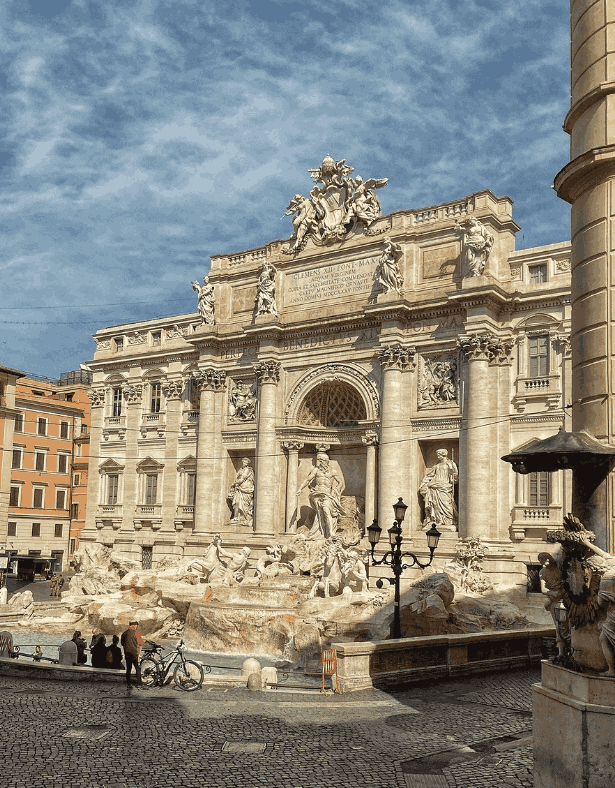
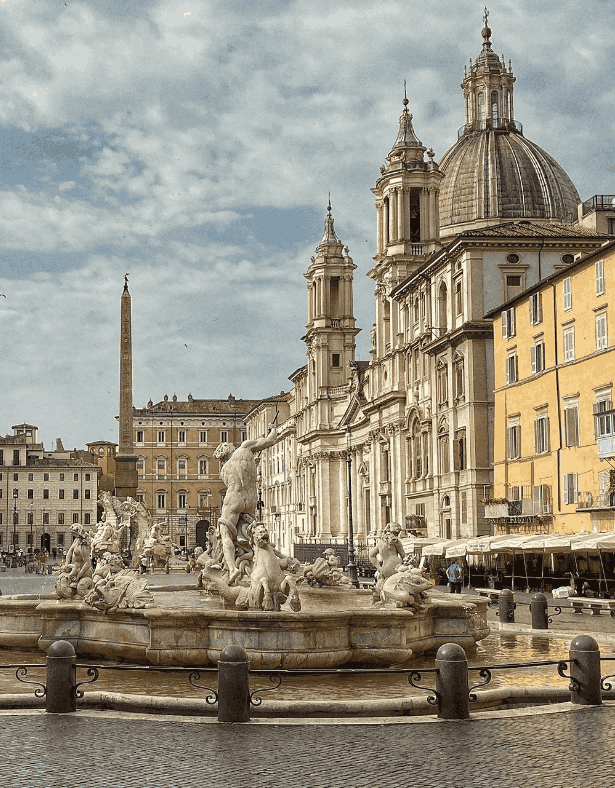
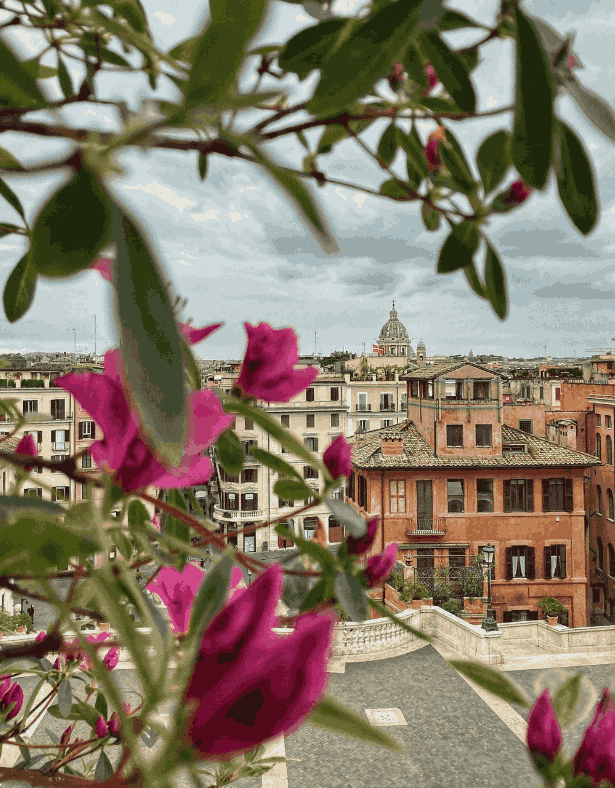
Where to Stay on a Budget (And Is It Safe?)
If you want to save money and still be well-connected, the Esquilino district is a smart choice. It’s close to Termini station, so connections are easy whether you’re arriving by train or heading to the airport. Esquilino is a lively, multicultural area, home to historic markets, churches, and a dynamic local life.
Is it safe? Rome’s Esquilino and Termini area get a lot of attention for pick-pocketing and rowdy late-night crowds, but you’re unlikely to encounter real danger. Exercise the same awareness you’d have in any big city. By day, Esquilino is buzzing and safe. At night, stick to the main streets, go with friends, and keep your valuables close.
Where to Stay for the Best Nightlife
If you want to experience Rome’s nocturnal energy, to stroll, people-watch, and bar-hop under twinkling lights, a few districts should be on your map.
Trastevere
The old core of Trastevere is Rome’s undisputed nightlife heart. As the sun goes down, the area fills with music, laughter, and the clink of Aperol spritz glasses. Enjoy a craft beer at Luppolo Station (Via Parini 4) or a creative cocktail at Mr Brown (Vicolo del Cinque 29). The mood is relaxed, and the atmosphere is friendly for all kinds of night owls, whether you’re in your 20s or 70s.
Where to Stay for a Short Trip
If you only have a day or two and want maximum flexibility, staying near Termini (Rome’s main train station, straddling Esquilino and Castro Pretorio districts) is convenient, especially for early departures or heavy luggage. You’ll have excellent metro, bus, and airport links, plus straightforward access to most of the city.
The area is practical more than picturesque. Any concerns about safety are mostly about pickpockets at night. Again, normal city sense and sticking to well-lit routes works well. By day, the area is bustling and safe for sightseeing, markets, and shops.
Best Rome Neighborhoods for Families
Traveling with kids? Some areas lend themselves especially well to a quieter pace and easy access to sites.
Spanish Steps (Piazza di Spagna) / Trevi
This is one of Rome’s most central and visitor-friendly districts. While not immediately next door to Termini Station (they’re about two kilometers apart, a few metro stops), you’re surrounded by beautiful piazzas, fountains, and handy hotels. You’re also in walking distance to Via del Corso’s shops, the Borghese Gardens, and countless ice-cream parlors.
Via Veneto / Barberini
The winding street of Via Veneto became famous thanks to “La Dolce Vita.” Today, this area near Barberini Metro is calm, elegant, and still dotted with leafy parks, perfect for strollers or older kids who love a good gelato.
Where to Stay for Your First Visit
If it’s your first time in Rome and you want to walk to as many famous sights as possible, these neighborhoods will give you that classic Rome experience:
- Piazza Navona: Wake up surrounded by Baroque beauty, fountains, and lively squares. Most major attractions, Pantheon, Trevi Fountain, Castel Sant’Angelo, are reachable on foot within 15-20 minutes.
- Campo de’ Fiori: Characterful, compact, and overflowing with market energy by day. It’s easy to wander from here into different parts of the historic center.
- Jewish Ghetto (Sant’Angelo): You’ll be near the river and introduced to some of Rome’s less-famous (but equally captivating) history and cuisine. Kosher bakeries, Roman-Jewish artichokes, and a quieter vibe.
- Piazza di Spagna/Trevi: Bustling, picture-perfect, great for shopping and people-watching. Choose a place near the Spanish Steps for timeless photos and quick access to the best of Rome’s boutiques.
- Via Veneto/Barberini: As mentioned above, stylish and family-friendly. Well-served by the metro for easy sightseeing.
Neighborhoods to Avoid (or Be Cautious At Night)
No area in central Rome is off-limits, but some districts near Termini, like Castro Pretorio and parts of Esquilino/Termini, are less charming after dark. You’ll find plenty of budget hostels and practical hotels here, but try not to walk alone on deserted side streets in the middle of the night. Main avenues and busy restaurant stretches are fine, and you’ll share them with other travelers and late-night Romans.
Where to Find the “Real” Rome
If you’re looking for a neighborhood with an authentic, local Roman mood, San Giovanni is a fantastic pick. The area is full of grand churches, ancient ruins, and bustling daily markets. You’ll see the blend of old and new as historic monuments sit alongside contemporary apartments. Here, visitors blend in easily and can enjoy a more relaxed, everyday pace, all while being just a short metro ride from the Colosseum or the heart of the old city.
Rome Neighborhoods for Longer Stays or Relocating
For digital nomads, students, expats, or anyone planning a medium to long-term stay, certain districts combine livability, amenities, and tranquility away from the whirlwind of tourists.
Nomentano/Bologna
This largely residential neighborhood north-east of the city center offers green parks, stately boulevards, and a calm, safe atmosphere. It’s perfect if you value privacy, a local vibe, and easy metro connections. There’s no shortage of family eateries, grocers, and leafy spaces.
Trieste & Quartiere Africano
On the northern side of Rome, the Trieste district is known for its Art Deco mansions, Liberty-style architecture, and leafy avenues. The eastern portion is unofficially named Quartiere Africano for its streets named after African countries and regions.
The area is mainly residential, and while much of the early 1900s social housing for railway workers is gone, you’ll find comfortable apartments, good schools, and top-rated gelaterie. Be sure to wander into Quartiere Coppedè, a hidden gem of whimsical and elaborate buildings that are unlike anything else in Rome.
Cinecittà Est
Slightly further out, Cinecittà Est is famous for its connection to Italian cinema, this is where you’ll find Cinecittà Studios, home to decades of movie magic and a genuine working studio open for tours. The zone has both budget lodgings and good public transportation, making it a favorite of students and long-term visitors.
Porta di Roma
Beware of confusion, some guides refer to this suburban district as “Porta di Nona,” but the correct name is Porta di Roma. It’s a large, planned neighborhood that sprang up in the 2000s. Here you’ll find one of Rome’s largest malls (Centro Commerciale Porta di Roma) and big city parks, such as Parco delle Sabine and Parco Talenti. This area is best for families or anyone seeking convenience, modern apartments, and open space.
Nuovo Salario
Nuovo Salario is a quiet, residential corner with lots of greenery, tucked northwest of the center. Once the domain of Roman high society, today it’s prized for peaceful living, safety, and leafy courtyards. If you prefer a neighborhood away from the main tourist flows, but still well-served by buses and local shops, it’s a solid option.
Rome’s Most Popular Neighborhoods (According to Travelers)
Tourism sites and travel forums consistently rank Trastevere and the Jewish Ghetto among Rome’s most beloved neighborhoods for their charisma and character. Trastevere’s winding lanes, orange-lit evenings, and eclectic eateries make it a favorite for both romantic trips and group adventures. The Ghetto charms with a quieter, historic vibe and unforgettable Jewish-Roman delicacies.
Keep in mind: “Best neighborhood” lists can change from year to year and across different websites, so always check recent reviews and crowdsourced rankings before you book.
Local Tips and Common Mistakes to Avoid
- Double-check addresses when hunting for restaurants, some beloved spots, like Hostaria da Enzo and Pecorino, are often listed with old or wrong street numbers.
- Don’t confuse “Porta di Nona” and “Porta di Roma”, the latter is the correct name for the district with the mega mall and green parks.
- The Termini area is convenient for arrival and departure, but not the most scenic for a Roman stroll. If you’re sensitive to street noise (or wary after dark), pick a quieter district and just use the train station for transport.
- If food is your priority, be adventurous and explore Testaccio, Monti, and Trastevere for the best mix of local vibes and great eats (with fewer “tourist menu” mishaps).
- Rome is a walking city. If you stay in the historical center, you can reach nearly all the famous sites within a 30-minute stroll. Otherwise, the metro system is easy to use, and cabs are everywhere.
- Wherever you stay, keep basic city-smarts in mind: watch your bags in crowds, use hotel safes, and keep an eye on your surroundings at night.
Choosing the Area that Fits You
The best way to enjoy Rome is to choose a district that matches your pace, your interests, and your travel companions. Foodies, focus on Testaccio, Monti, and Prati. Night owls, head to Trastevere. Families, consider Spanish Steps or Barberini. For romance and history, wander Piazza Navona or Campo de’ Fiori. And if you’re planning to linger, neighborhoods like Nomentano, Trieste, or Nuovo Salario offer a peaceful slice of local life.
Even with a few quirks and minor mistakes in some guides, most of Rome’s central neighborhoods are safe, beautiful, and brimming with life. Double-check addresses, take normal precautions, and get ready to make unforgettable memories in the Eternal City.
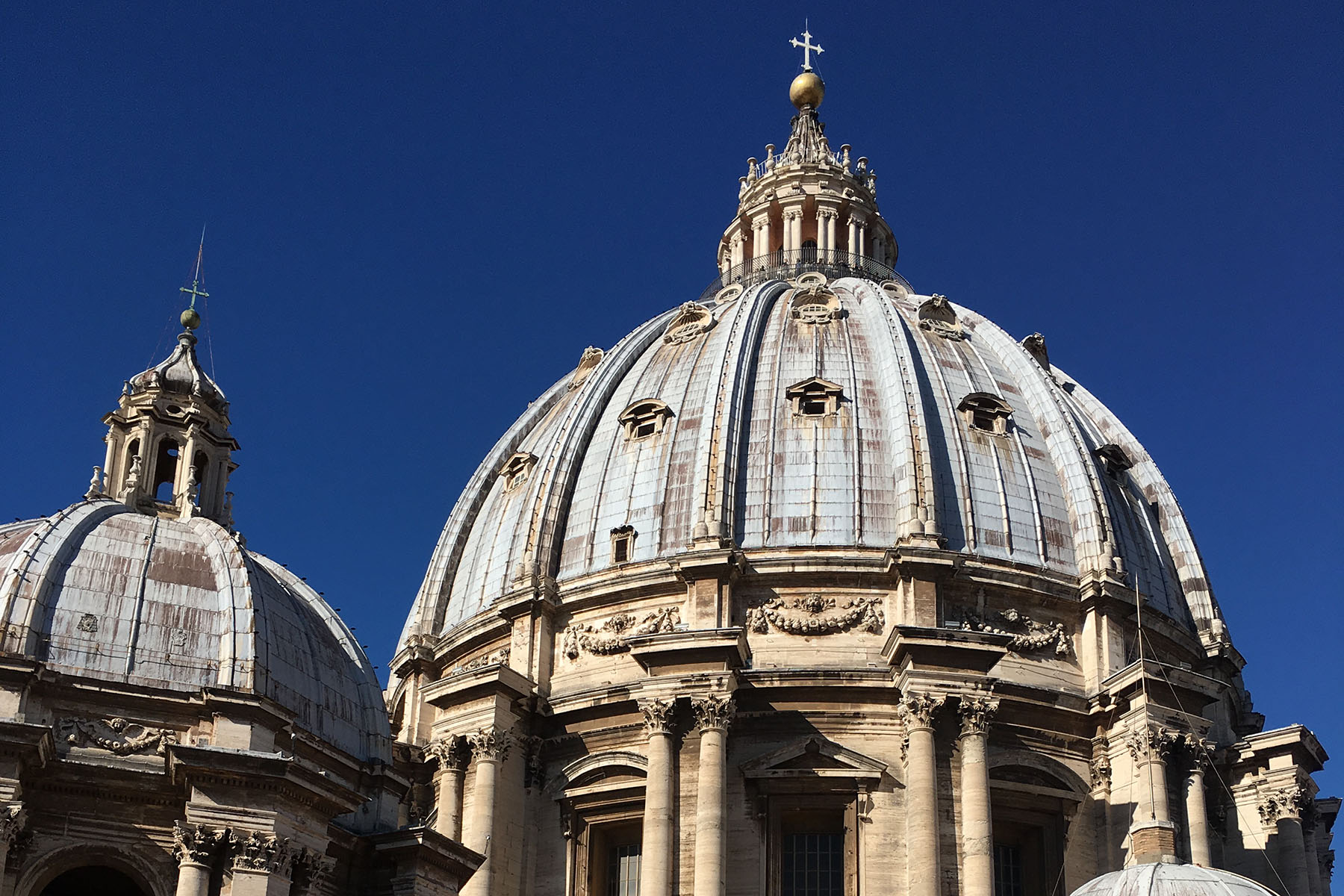


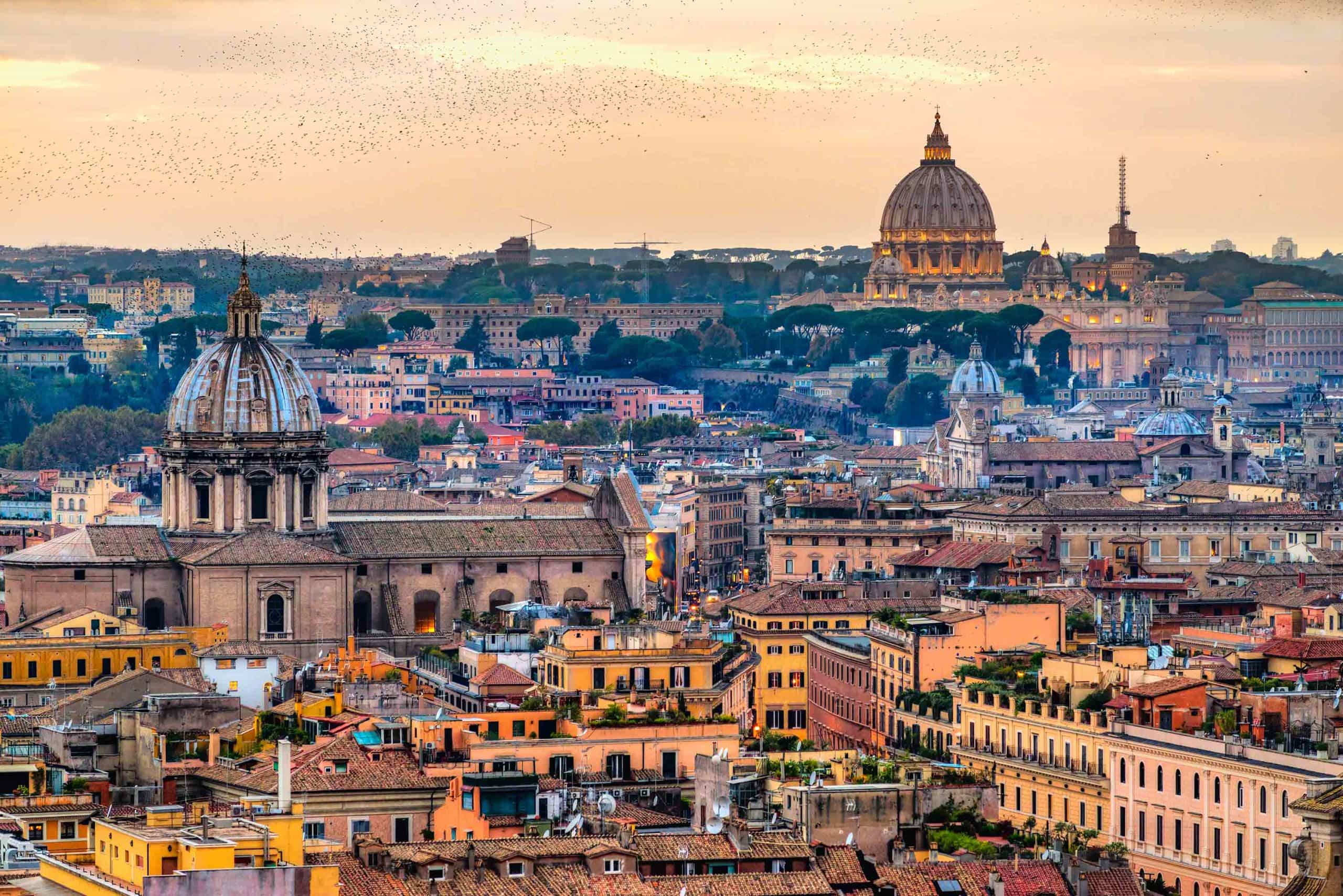
Discover Rome on Foot
Why our Rome guide works
Our mission is simple: help you explore Rome in a smart, walkable way. Every guide includes time‑boxed routes, an interactive map, and practical advice on tickets, transport, safety, and food, so you can discover Rome without overwhelm.
✔️ Clear, realistic Rome itineraries built by locals
✔️ Insider tips to beat crowds and avoid tourist traps
✔️ On‑route cafés, trattorie, gelato, and viewpoints
✔️ Offline‑friendly PDFs with map pins for your phone
FAQs
Will the itineraries work offline?
Yes. The PDFs are phone‑friendly and the map pins can be saved offline (instructions included).
Do you update opening hours and links?
We maintain 2025 updates and push changes to your download link whenever things change.
Are tickets included?
No, attraction tickets, transport, and meals are not included. We provide direct links and advice on what to book.
Refunds for digital downloads?
All sales are final. If you have trouble accessing files or the map, contact us and we’ll help.
Free Rome planning checklist (PDF)
Join 10k+ travelers planning to explore Rome smarter
We’ll email you the checklist to save on your phone.